56 year old male had 5/10 chest pain for several hours, then presented to the ED in the middle of the night with 1/10 pain.
Dr. Smith's ECG Blog
APRIL 14, 2024
No ischemia. Case continued Another ECG was recorded 3 hours later, still 1/10 pain: There is sinus bradycardia with RBBB. This is a conundrum, because it is clear that the patient is having an acute MI, the ECG is dynamic, but the pain is very mild and there is no ECG evidence of active transmural ischemia.




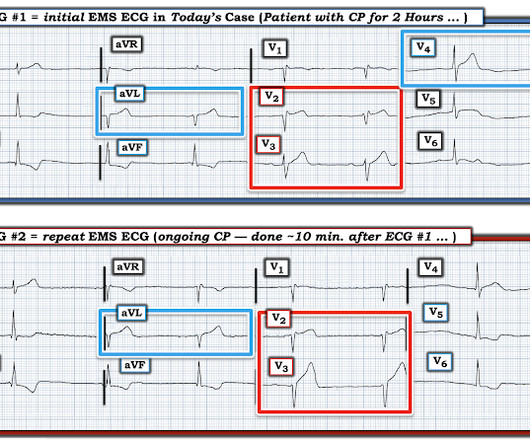

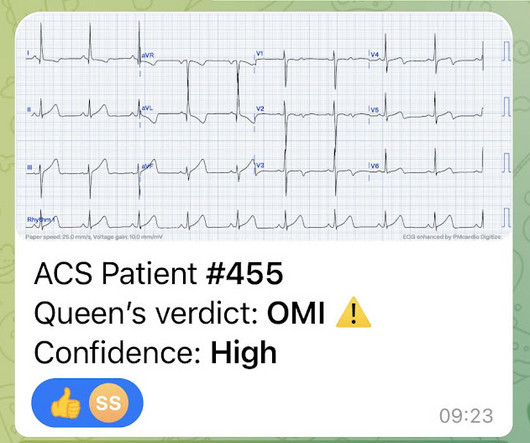
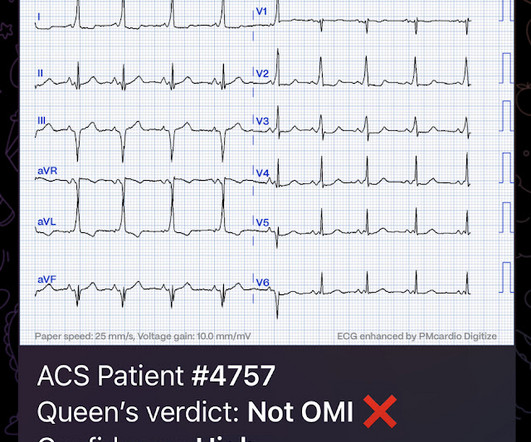
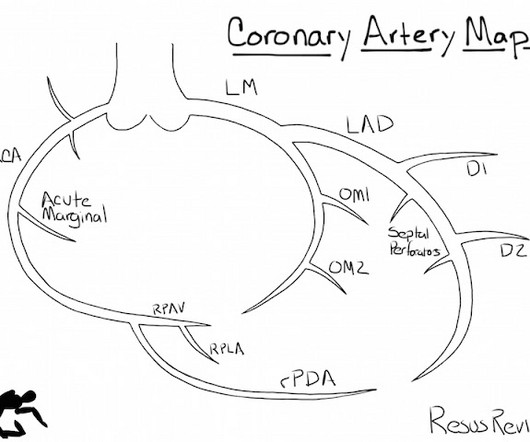
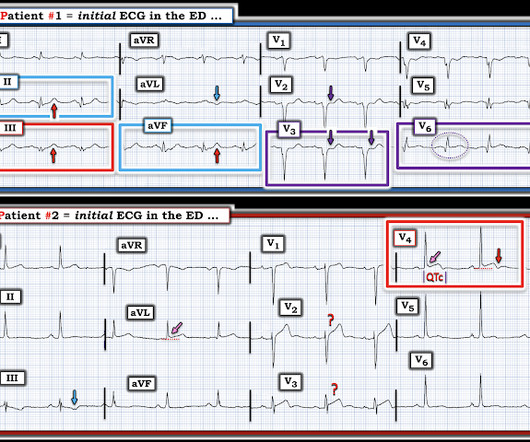

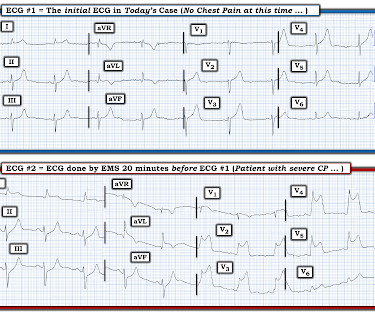
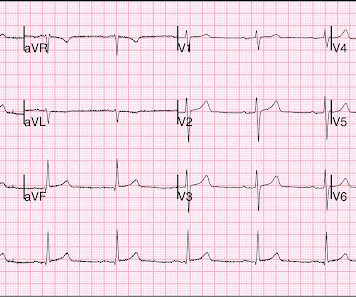

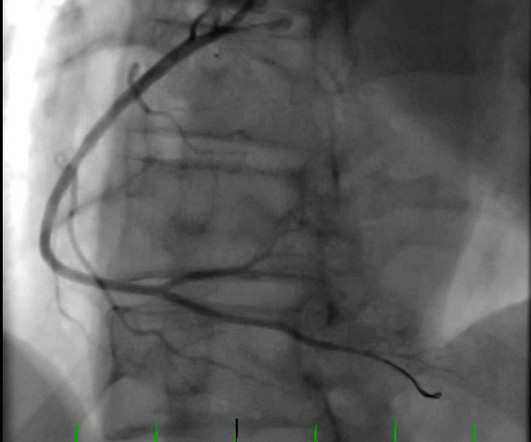
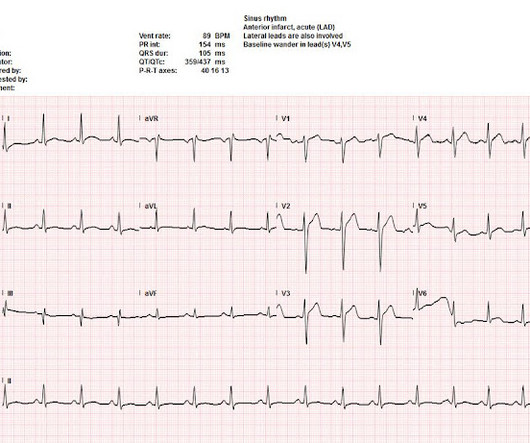






Let's personalize your content